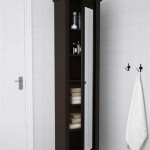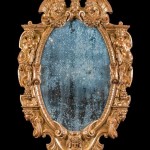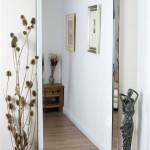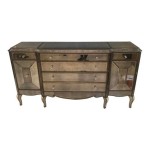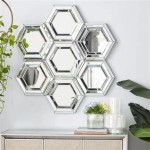How To Make a Mirror with LED Lights
Creating a custom mirror with integrated LED lighting can enhance any room's aesthetic, offering both functional illumination and a touch of modern design. This article provides a comprehensive guide to constructing a DIY LED mirror, outlining the necessary materials, tools, and step-by-step instructions.
Gathering the Necessary Materials
Before beginning the project, it is essential to gather all required materials. This proactive approach ensures a smooth and uninterrupted workflow. The primary components include a mirror, LED strip lights, a power supply, wiring, mounting hardware, and safety equipment.
Selecting the appropriate mirror is crucial. Consider the desired dimensions and shape, ensuring it fits the intended space. LED strip lights are available in various colors and brightness levels; choose options that complement the room's décor and provide sufficient illumination. The power supply should be compatible with the chosen LED strips, providing the correct voltage and amperage. Wiring, connectors, and mounting hardware, such as clips or adhesive tape, are also essential for a secure and stable installation.
Choosing the Right LED Strip Lights
LED strip lights come in a variety of forms, each with its own advantages. Waterproof options (IP67 rating) are ideal for bathroom installations, offering protection against moisture. Non-waterproof strips (IP20 rating) are suitable for dry environments and are often more cost-effective. Consider the color temperature, measured in Kelvin (K), to achieve the desired ambiance. Warmer tones (2700-3000K) create a relaxing atmosphere, while cooler tones (5000-6500K) provide brighter, more task-oriented lighting. Finally, determine the required brightness, measured in lumens per meter. Higher lumens indicate brighter light output.
Preparing the Mirror and LED Strips
Once the materials are assembled, preparation is key. Carefully clean the mirror's surface with a glass cleaner to ensure proper adhesion of the LED strips. Measure the perimeter of the mirror accurately to determine the required length of the LED strips. Cut the strips along the designated cutting marks, ensuring not to damage the circuitry. If necessary, solder wires to connect multiple strips, ensuring proper polarity.
Mounting the LED Strips
Mounting the LED strips requires precision and care. Peel back the adhesive backing on the LED strips and carefully apply them to the back of the mirror, following the desired pattern. Ensure the strips are evenly spaced and securely attached. For added stability, consider using mounting clips or additional adhesive. Avoid placing the strips too close to the edge of the mirror to prevent light leakage.
Connecting the Power Supply and Wiring
Connecting the power supply involves several crucial steps. First, connect the LED strip wires to the power supply, observing correct polarity. Securely fasten all connections using appropriate connectors or soldering. Test the connection by briefly powering on the system to ensure proper functionality. Once confirmed, conceal the wiring behind the mirror using adhesive clips or tape, maintaining a tidy and professional appearance.
Installing the Mirror
With the LED strips installed and connected, the final step involves mounting the mirror. Depending on the mirror's size and weight, appropriate mounting hardware should be selected. Use wall anchors and screws for heavier mirrors to ensure secure attachment. For lighter mirrors, adhesive-backed mounting systems may suffice. Ensure the mirror is level and securely fastened before connecting the power supply to the main electrical circuit.
Safety Precautions
Throughout the entire process, prioritizing safety is paramount. Wear appropriate safety glasses to protect eyes from potential debris. When working with electrical components, ensure the power supply is disconnected before making any connections. Follow all manufacturer instructions regarding the installation and use of electrical components. If uncertain about any aspect of the process, consult a qualified electrician.
Troubleshooting Common Issues
Occasionally, issues may arise during or after installation. If the LED strips do not illuminate, double-check all connections and ensure the power supply is functioning correctly. Uneven lighting may indicate inconsistent spacing of the LED strips or a faulty power supply. Flickering lights may suggest a loose connection or an incompatible power supply. By systematically checking these potential problems, most issues can be readily resolved.

How To Diy Vanity Mirror With Led Strip Lights

How To Make A Vanity Or Bathroom Mirror With Strip Lights

Diy Led Light Strips For Mirror Practical Advice Nakashi Lighting

Diy Led Framed Mirror Modern Builds Ep 74

How To Make Cute Lighted Leaning Mirror

How To Diy Vanity Mirror With Led Strip Lights

Diy Vanity Mirror I Used Any And Led Strip Lights Closet Lighting

Diy Light Up Vanity Mirror For 20 With Remote Lights

Bathroom Remodel Diy Backlit Mirror Leah And Joe Home Projects Crafts

How To Make A Vanity Or Bathroom Mirror With Strip Lights

